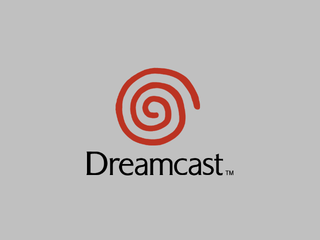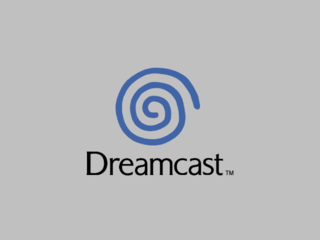Dreamcast
| Dreamcast |
|---|
|
Developer: Sega
|
The Dreamcast... wait, hang on...
BEEEEEEP. Please wait while disc is being checked. *SKRRRRRRT*
*whirrrrr, SKRRRR-KRRRRRT, SKRRRT*
There we go. Sorry about that. Anyway, the Dreamcast was Sega's final effort as a contender in the video game console market. Though it was released to much applause with a strong library of games, it was quickly overshadowed by the success of the PlayStation 2 and was limited by both severe piracy problems (thanks to its proprietary GD-ROM discs being its only form of copy protection, which bit Sega royally when hackers discovered the console's support for multimedia CDs) and the string of failed hardware preceding its release.
As people got used to modern disc-based consoles, the console's... idiosyncratic noisiness has since become a memorable aspect to fans and newcomers, mainly because most consoles don't angrily growl at you the instant the lid closed or the batteries ran out.
If it's any consolation, the Dreamcast's extreme vulnerability to piracy did end up giving birth to one of the most vibrant homebrew communities to date, with modifications to games being encouraged by some developers near the end of the console's life.
Contents
Sub-Page
| Prototype Info |
Development Text
All of these are present in the BIOS.
0x7B0:
SEGA SEGAKATANA KABUTO Ver.1.01d Copyright(c) SEGA ENTERPRISES LTD., 1998,1999
0x9EA4:
syTmr Version: 0.51.syTmr Build:Jun 23 199814:52:57
0xEB40:
syRtc Ver 1.00 Build:Sep 28 1998 05:10:44
0x10010:
SIMPLE PLAYER VER. 1.00 98/10/02
0xECA96:
COPYRIGHT (C) NEC Corporation 1998 All rights reserved by NEC Corporation. This program must be used solely for the purpose for which it was furnished by NEC Corporation. No part of this program may be reproduced or disclosed to others, in any form, without the prior written permission of NEC Corporation Use of copyright notice does not evidence publication of this program Developed by * Semiconductor Solution Engineering Division NEC Corpolation * Home Multimedia Development Division NEC Corpolation * Client Server Software Development Division NEC Software,Ltd
0x1A0090:
1998,(C)SEGA ENTERPRISES 1998.09.09:DIGITALMEDIA :Y.Kashima / K.Suyama for Boot ROM ++
Hidden Alternate Menu
Having Puyo Puyo Fever data saved to a Visual Memory Unit will allow you to access a hidden menu in the Dreamcast BIOS. Pressing Start on the controller will bring up an alternate 3D menu that you can move around.
Hidden Credits
Present at 0x1A1A0 in the flash ROM is a list of names.
Shoichiro Irimajiri Sadahiko Hirose Hidekazu Yukawa Hideki Satou Nobuhisa Yamada Taku Matsubara Kazuhiro Yasutomi Shoji Nishikawa Takashi Sekimoto Toshihiro Oba Shuji Hori Masaharu Shinohara Kazuhiro Baba Katsunori Gendo Kouji Horikawa Masatoshi Horikawa Osamu Hosokawa Seiichi Kajiwara Junko Kase Toshikazu Kawada Yasuhisa Kawase Yusuke Kiguchi Naohiko Kobayashi Manabu Kubo Teruaki Kuwana Kunihiro Mori Tomoyuki Mori Shigeru Motoyoshi Takeshi Nagashima Yoshifumi Nakamura Chuji Nakayama Madoka Nakayama Tatsuya Namatame Yasuhiro Nishiyama Toshiyuki Ogawa Tadashi Ohya Tetsuya Okawa Tatsuya Sakurai Hideaki Satou Yutaka Suetsugi Eriko Suzuki Masahiko Takeuchi Makoto Takiguchi Ryo Taki Masaki Tanaka Kazuo Tsuda Satoshi Tsuda Koichi Takayasu Naoki Niizuma Atsunori Himoto Tomoe Shinohara Kunihiro Tokumaru Yoshikazu Nagao Satoshi Kira Akitoshi Oikawa Hirokazu Hama Toshimichi Sugai Naoji Ozaki Hiroki Gotou Masaharu Yoshii Masaki Kawahori Yuki Yamanaka Shinichi Uchida Masahiro Seki Takashi Ando Hideki Kudo Nobuhiro Fukuda Jiro Terakawa Yoichi Uchida Hiroki Okabata Kazuyoshi Hara Yuko Nasu Syuuji Okada Yutaka Okunoki Tatuya Kouzaki Tadashi Jokagi Yoshiaki Kashima Kazumi Suyama Yutaka Sugano Tomoko Hasegawa Kazuhiro Matsuta Katsuhiko Sato Manabu Kusunoki Shinichi Oya Takeshi Suzuki Kazunori Shibata Shigeyuki Shimizu Masayuki Imanishi Kenji Ohtsuji Masamichi Miyoshi Tarou Mitani Takaaki Jindou Yoshitake Noguchi
Regional Differences
| Japan/US | Europe |
|---|---|
 |
 |
In Europe, the Dreamcast logo was changed from red to blue. The reason for this has never been officially confirmed, but the editors of Edge magazine theorized that it was to prevent legal problems with German publisher Tivola, as their logo is a red swirl.[1]
Unusually, most games for the European Dreamcast prioritised 60hz. 50hz was often a secondary option, with only a few games supporting just 50hz.
References
- Pages missing developer references
- Games developed by Sega
- Pages missing publisher references
- Games published by Sega
- Pages missing date references
- Games released in 1998
- Games released in November
- Games released on November 27
- Games with hidden developer credits
- Games with hidden development-related text
- Games with regional differences
- Games with revisional differences
- Dreamcast games
- BIOS/Firmware ROMs
Cleanup > Pages missing date references
Cleanup > Pages missing developer references
Cleanup > Pages missing publisher references
Games > BIOS/Firmware ROMs
Games > Games by content > Games with hidden developer credits
Games > Games by content > Games with hidden development-related text
Games > Games by content > Games with regional differences
Games > Games by content > Games with revisional differences
Games > Games by developer > Games developed by Sega
Games > Games by platform > Dreamcast games
Games > Games by publisher > Games published by Sega
Games > Games by release date > Games released in 1998
Games > Games by release date > Games released in November
Games > Games by release date > Games released in November > Games released on November 27